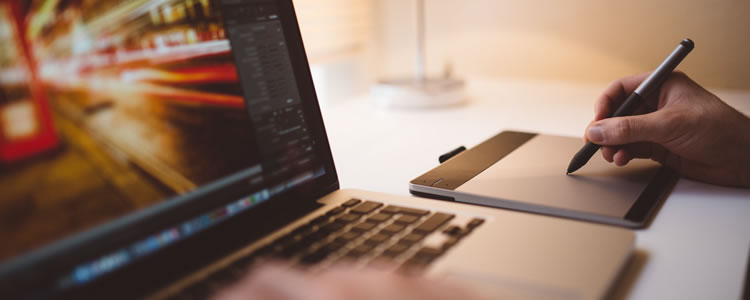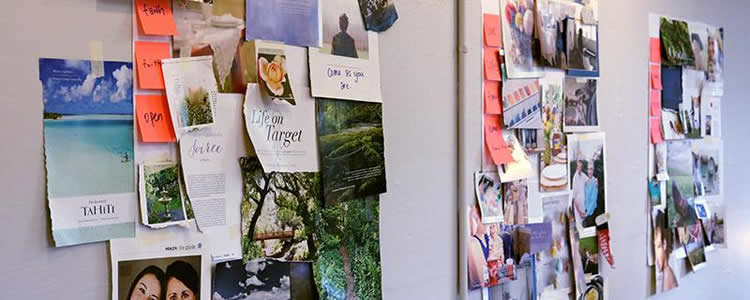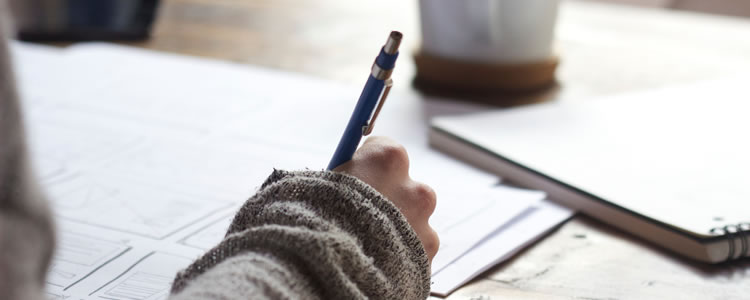At some point in your design career, you’ve probably been in a meeting with a client discussing design for their website or product, and the conversation starts to turn toward directives or opinion-giving: move this element over here, I don’t like that color blue, make the logo bigger, and so on. (Maybe it starts to look like the relationship illustrated in this video on redesigning the stop sign.)
These kinds of relationships can lead to the habit of not bringing clients into the design process, or waiting until the end to unveil visuals and hoping that it all works out. Conversely, it can result in having to spend more time and money going back to the drawing board because a design doesn’t hit the mark and meet the client’s goals.
Bringing clients along for the design ride doesn’t have to be a daunting undertaking. It can be a productive collaboration that ends with a useful and intentional outcome. And we’re definitely not talking about over-the-shoulder designing in Photoshop.

It’s about finding ways to put everyone’s minds together in a productive way. Clients bring their subject matter expertise of the business and organization, while designers bring their ability to visually communicate ideas and problem solve. Thoughtfully done, collaborating on design leads to a more impactful outcome than either party could accomplish individually.
What to Think About Before Collaborating
Before bringing in decision makers, think about what you need to know in order to do your best design work. Do you need their input on brand values? What goals do they have for the thing you are designing? This knowledge can help you shape the right activity for your collaboration.
Design is an area that clients may not feel expertise in, and struggle to know how to contribute meaningfully (as much as they may want to). Therefore, one of your goals should be to lead and guide them through the process. Help them learn how to contribute.

Ways to Collaborate in Design
When ramping up to design, there are three methods that can be helpful to involve clients in, and even start co-creating/co-imagining with designers:
1. 20 Second Test
Gather a range of images or collections of design elements (eg. if you’re working toward a website design, try using website screenshots that have a range of design styles). Put each image or collection in front of the client (and the design team) for 20 second each.

Ask them to rate what they see on a scale of 1-5 (1 is meh, 5 is awesome – but this scale is customizable to your needs!) Then take another round of 20 seconds each with the same images and ask everyone to write what comes to mind when they view each one.
After these two rounds, discuss as a group how everyone rated and described each design. This is a great way to see where everyone’s visual tolerance is and can help create a common language around how people define different adjectives. “Clean” and “modern” can mean different things to different people, after all.
2. Visual Values
If the client has established brand values (or you’re helping define those), hold a session where everyone spends time clipping designs, products, typography, and other elements from magazines (or even printed out websites and brand elements) that each person feels aligns with those values.
This can help establish alignment among teams and open conversation about how everyone sees those values manifesting visually.
3. Concept Sketching and Mashing
With goals for the website or product (or whatever you’re designing) in mind, have a session with the client where everyone sketches concepts (or wireframes) that might meet those goals.

Time box the sketching (anywhere from 3-5 minutes per round) and share the results. Have everyone vote for their favorite ideas or elements, then take another round to try mashing the favorites to build toward the best outcome. Use those mashups to have conversation about what might work and not work, and help inform design direction.
Continuing the Collaboration
If you’ve used any of the methods above, then you’ve started to establish a shared visual language and build a bank of ideas with your clients. That can make it easier to talk about designs as they start to shape up. It also helps foster trust and get buy-in sooner, which makes for a smoother design process.
Collaborating with clients in the design process can be rewarding and help you save time by avoiding endless revisions. It’s rewarding for clients, too, as it helps them feel more involved and have an increased understanding of the rationale behind at a particular solution.
All of this keeps us on the path of doing quality work that we love, while building great relationships to boot.
Related Topics
Top